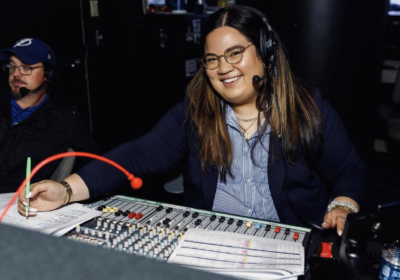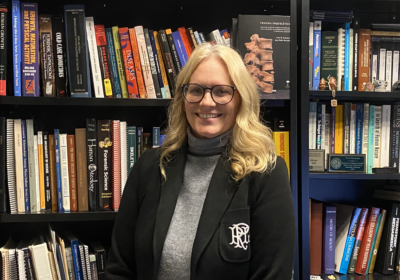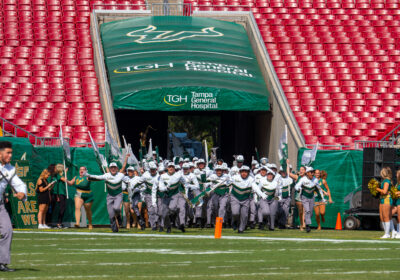Contemporary Art Museum celebrates 25 years with new exhibit
Nestled behind the Marshall Student Center is one of USF’s well-regarded assets — one that many students don’t know exists.
For 25 years, USF’s Contemporary Art Museum has been a vanguard for facilitating art in the community, and Friday night it celebrated its anniversary with a sizeable crowd, fancy fare and the opening of “CAM@25: Social Engagement,” the museum’s newest exhibition featuring artists from Latin America.
The museum was established in 1989, and has since showcased the work of artists from around the world, as well as that of USF students.
Margaret Miller, director of the museum, said it seemed like “just the other day” when the museum first opened.
“We’ve been programming from the very beginning ambitious shows that include artists from other parts of the world,” she said. “We started out with Swiss artists, then American artists, and here we are with an artist from Rio, an artist from Mexico City and an artist group from Cuba.”
The artists featured in the museum’s newest exhibit mingled with guests and answered questions about their art.
Alexandre Arrechea, a Cuban-born artist, presented “Transportable City,” an exhibit of large tents shaped and positioned in the manner of Cuban architecture. The tents were arranged outside the museum. The work was done in 2000, while Arrechea was a member of Los Carpinteros, an art collective comprised of other Cuban artists. Three years after “Transportable City,” he decided to embark on a career as a solo artist.
“The piece is inspired by the migrating movement (from Cuba to the U.S.),” Arrechea said. “But then it became a piece that appealed to the movement around the world . . . after 14 years, I think it continue(s) to talk about an issue that is relevant.”
This isn’t the first time Arrechea has been to USF.
In 2004, he said he collaborated with Los Carpinteros and USF’s Graphicstudio to premiere an exhibition called “Inventing the World,” a collection of Los Carpinteros’ work since the 1990s that dealt with “the idea of inventing the world, or designing basic needs for organized human life.
Pedro Reyes stood next to his exhibit of musical instruments made from guns, conversing with other patrons. Reyes, who was born in and lives in Mexico City, said he piece is art and “a call to action.”
The piece, “Disarm,” was his attempt to deal with that issue, Reyes said.
Reyes obtained the weapons from Mexico’s military. The country’s military regularly destroys old weapons, and then buries them, Reyes said. When he had the weapons, he enlisted the help of musicians, smiths and welders.
There’s a guitar made from machine gun magazine clips and handguns. There’s another guitar made from a helmet. Revolvers uphold an instrument that resembles a xylophone and has what appears to be bell chimes made out of the barrels of large weapons. Six guns, fused together side-by-side appear to make a pan flute.
“In Mexico, we have recently — in the last 10 years — seen an increase in violence, because (of) all the weapons that come from the United States,” he said. “It’s very easy — too easy — to buy weapons in the United States.”
Musical instruments are the opposite of weapons, Reyes said. The process, for him, was “turning an instrument of death into an instrument of life.”
At 7 p.m. on Thursday in Theatre II, there will be a performance of the instruments and a post-performance discussion. The event is called “Amendment to the Amendment/ (under)stand your ground.”
The discussion, Reyes said, is a democratic exercise where people will be able to voice their opinions about the use of guns in the U.S. and the Constitutional amendment that allows their possession.
“Is the regulation in place the best we can have?” he asked. “Or should there be something that can be changed?”
CAM@25 will be on display until March 8.
Within the next few years, Margaret Miller said she hopes the museum can have a more influential presence and pose relevant questions. The museum, she said, has exhibitions planned for the next two years.
This summer, the museum plans to host artist Duke Riley, who was recently featured in the New York Times for training pigeons to fly from Key West to Havana, Cuba to carry cameras and smuggle cigars. Miller said Riley plans to do a project that encourages community involvement.
“We’ll do projects that are very socially engaged,” she said. “That are about asking the question ‘Can art be transformative — a catalyst for change?’”






